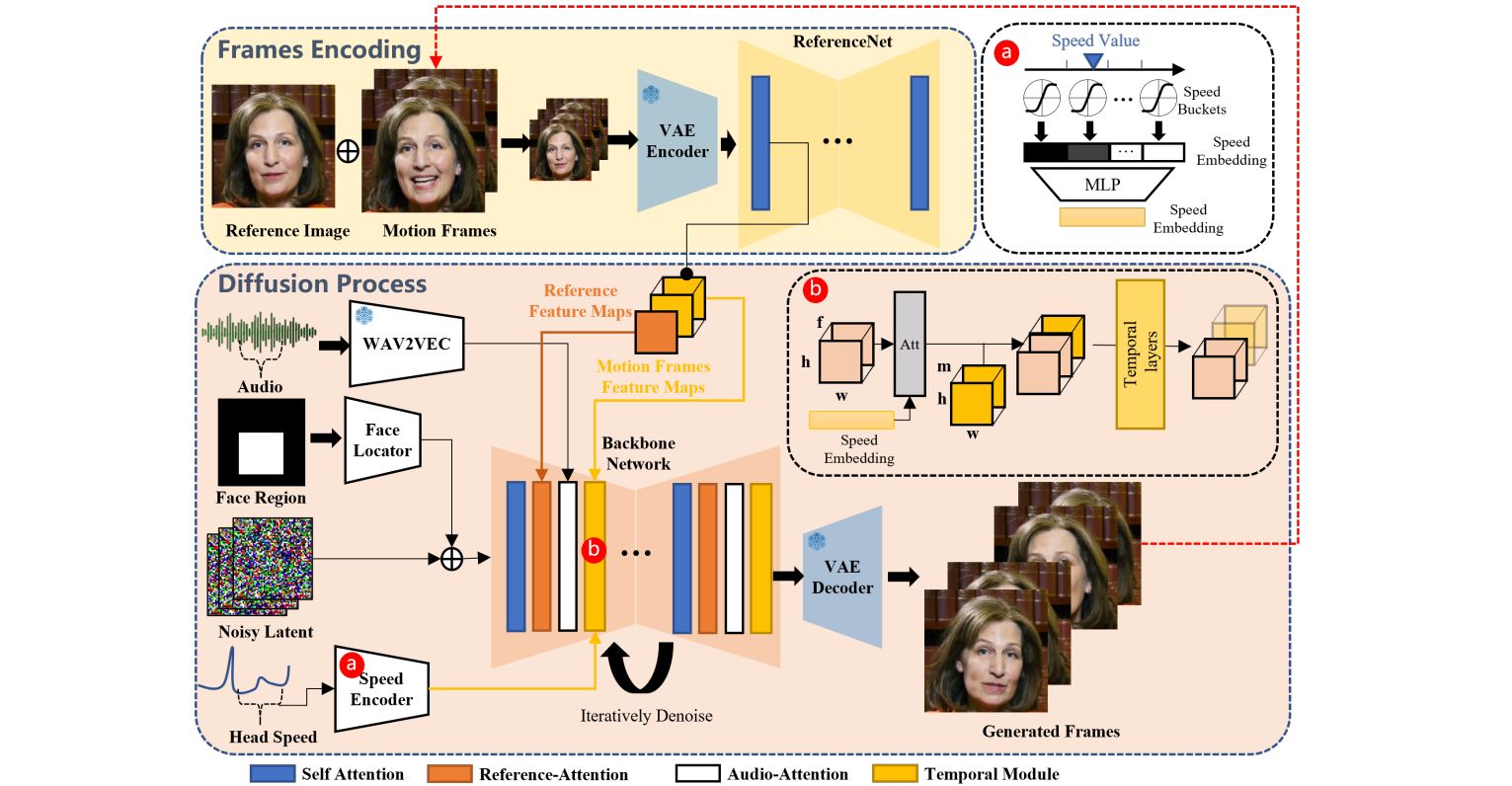Alibaba’s EMO (or Emote Portrait Alive) framework is a recent entry in a series of attempts to generate a talking head using existing audio (spoken word or vocal audio) and a reference portrait image as inputs. At its core it uses a diffusion model that is trained on 250 hours of video footage and over 150 million images. But unlike previous attempts, it adds what the researchers call a speed controller and a face region controller. These serve to stabilize the generated frames, along with an additional module to stop the diffusion model from outputting frames that feature a result too distinct from the reference image used as input.
In the related paper by [Linrui Tian] and colleagues a number of comparisons are shown between EMO and other frameworks, claiming significant improvements over these. A number of examples of talking and singing heads generated using this framework are provided by the researchers, which gives some idea of what are probably the ‘best case’ outputs. With some examples, like [Leslie Cheung Kwok Wing] singing ‘Unconditional‘ big glitches are obvious and there’s a definite mismatch between the vocal track and facial motions. Despite this, it’s quite impressive, especially with fairly realistic movement of the head including blinking of the eyes.
Meanwhile some seem extremely impressed, such as in a recent video by [Matthew Berman] on EMO where he states that Alibaba releasing this framework to the public might be ‘too dangerous’. The level-headed folks over at PetaPixel however also note the obvious visual imperfections that are a dead give-away for this kind of generative technology. Much like other diffusion model-based generators, it would seem that EMO is still very much stuck in the uncanny valley, with no clear path to becoming a real human yet.
Thanks to [Daniel Starr] for the tip.
